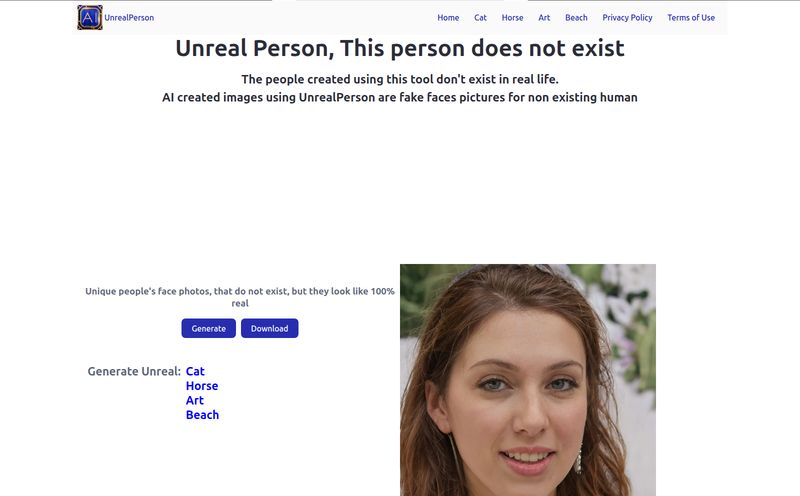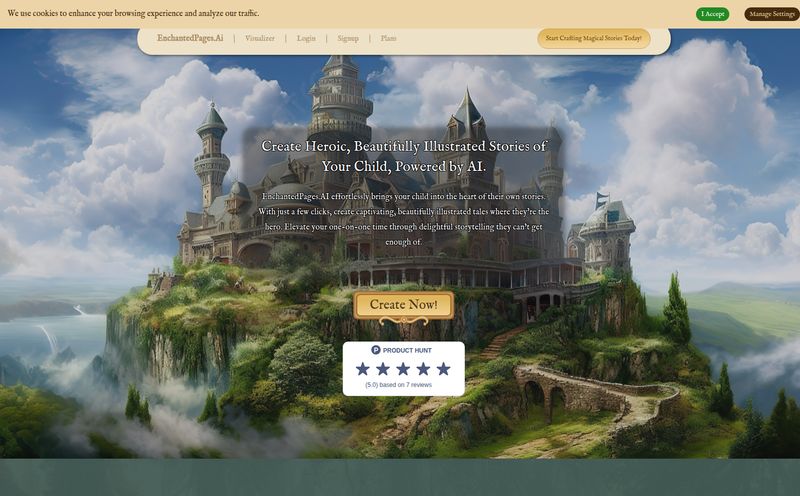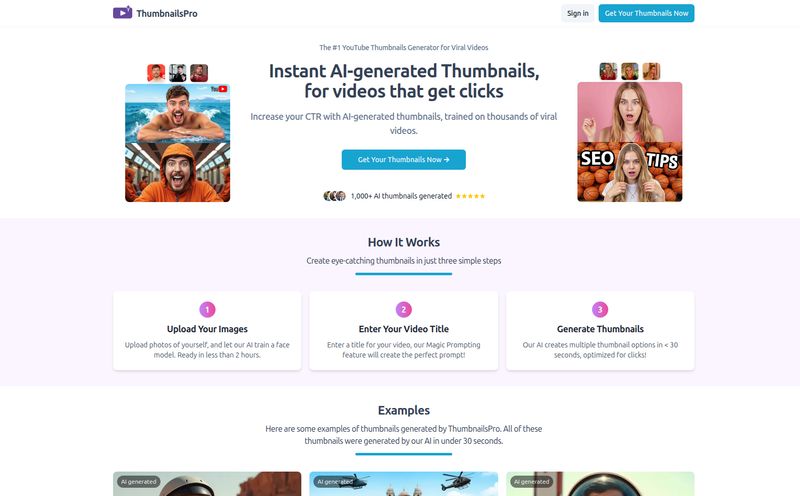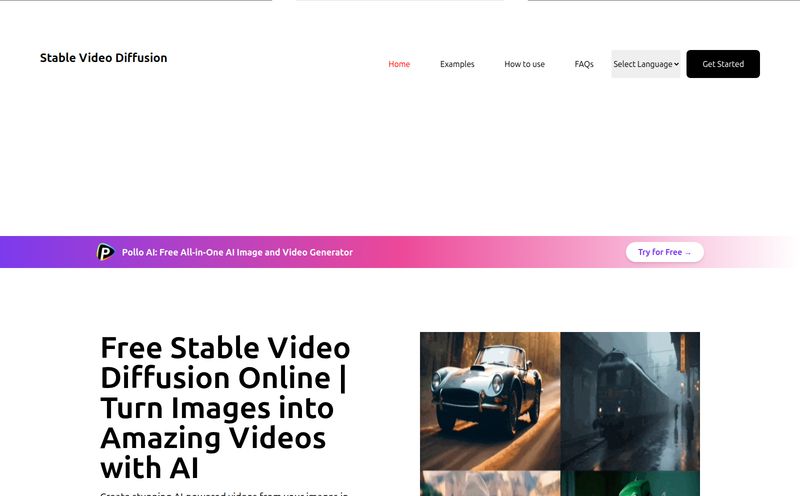Trying to keep up with the AI space these days feels a bit like trying to catch confetti in a hurricane. Just when we were all collectively holding our breath, waiting for OpenAI to finally release Sora to the public, another engine comes roaring down a parallel track. Meet Kling AI.
My first reaction? A healthy dose of SEO-jaded skepticism. "Another AI video tool, great." We see them pop up every week. Most are... fine. They can make a cat vaguely float across a screen, but the physics are wonky and there's that tell-tale wobbly, uncanny valley feel. But then I saw the demos for Kling. And the company behind it—Kuaishou, a Chinese tech giant that's basically a rival to TikTok's parent company, ByteDance. Okay, now you have my attention. This isn't some startup in a garage. This is a heavyweight stepping into the ring.
What Exactly is Kling AI? More Than Just a Prompt Box
On the surface, Kling sells itself as a text-to-video model. You type in a sentence, and it spits out a video. Simple. But digging a little, it's positioned as an entire AI creative studio. The goal here isn't just to be a one-trick pony; it’s to build a workflow. They talk about going from script to storyboard to final video, all within one ecosystem. For anyone who's ever tried to stitch together a video using five different apps, you know how appealing that sounds.
It’s a platform designed for both the casual creator who wants to see a “panda playing basketball in the style of a comic book” and the serious developer. They have a whole developer platform with APIs for video and image generation. That's a clear signal they're aiming for broad adoption, from social media memes to integrating this tech into other applications.
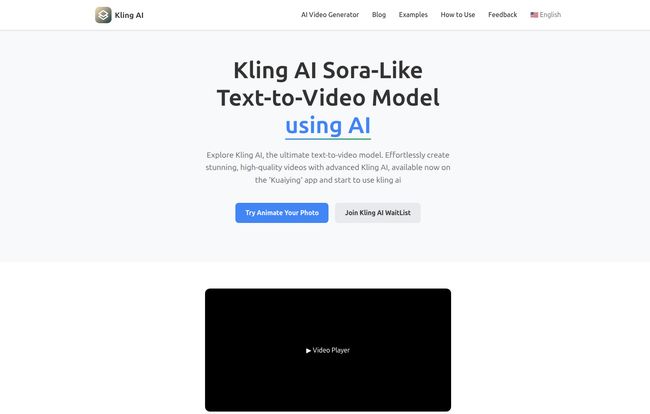
Visit Kling AI
The Features That Actually Matter to Creators
Fancy marketing is one thing, but as a content creator, I only care about what it can actually do. Does it make my life easier? Does it produce content that doesn't look like a weird fever dream? Let's break down what Kling is bringing to the table.
Jaw-Dropping Video Length and Quality
This is the first thing that made me sit up straight. Kling can generate up to 2 minutes of video at 1080p resolution and 30 frames per second. Let that sink in. Two. Full. Minutes. Most of the accessible AI video tools on the market right now tap out after 4, maybe 10 seconds if you’re lucky. This is a massive leap. It’s the difference between creating a GIF and creating a genuine short film, a product demo, or a complex narrative scene. This is a spec that puts it right in the same conversation as Sora.
It Understands How the World Works (Mostly)
The biggest giveaway of bad AI video is its complete disregard for physics. You know, people's arms bending the wrong way, a car turning a corner like it's made of jello. Kling boasts about its ability to “simulate physical world characteristics.” Under the hood, they're using something called a 3D spatiotemporal joint attention mechanism. It's a mouthful, but in plain English, it means the AI has a better grasp of how objects move and interact in a three-dimensional space over time. A ball thrown in a Kling video will arc and fall realistically. A person walking will have a consistent gait. It's not perfect, but it's a huge step towards believability.
Your Imagination is the Only Limit
Here's the fun part. The model is built to handle bizarre and complex concepts. The website gives an example of a "cat driving a car on a city highway," and the demos show it off pretty well. This “powerful concept combination ability” is where the magic happens for creative marketing and content. Instead of searching for the perfect stock video clip, you can just create it. Think of the possibilities for ad campaigns or social media content that needs to be thumb-stoppingly weird and wonderful. I remember spending days in After Effects trying to keyframe a simple animation. The idea that you can just... type it now is mind-boggling.
Built on Some Seriously Powerful Tech
For the tech nerds in the room, Kling is built on a Diffusion Transformer architecture. Why does this matter? Because it's the same fundamental technology that powers top-tier models like Sora. This isn't some re-skinned old model; it's running on the same engine class as the Ferraris of the AI world. This architecture is what allows for that high-quality output and the ability to understand complex prompts. It shows a serious investment in R&D from Kuaishou.
How Does Kling AI Compare to OpenAI's Sora?
This is the question everyone's asking. Kling's own marketing invites the comparison. So, let's get into it. The honest answer is: it's complicated. We've only seen curated demos from Sora, so we're comparing Kling's beta product to OpenAI's highlight reel. It's a bit like comparing a car you can test drive to a concept car at an auto show.
That said, here’s a quick rundown based on what we know:
| Feature | Kling AI | OpenAI's Sora (Based on Demos) |
|---|---|---|
| Max Video Length | Up to 2 minutes | Up to 1 minute |
| Resolution | 1080p | Up to 1080p (presumed) |
| Public Access | Yes (Beta via Kuaishou app) | No (Limited to red teamers/creators) |
| Core Technology | Diffusion Transformer | Diffusion Transformer |
On paper, Kling actually beats Sora in video length. And most importantly, you can actually use it, which is a pretty big advantage. The quality of Sora's demos might still have a slight edge in terms of cinematic polish and realism, but Kling is astonishingly close. It's not a 'Sora killer' just yet, but it is without a doubt a legitimate, powerful contender.
How to Get Your Hands on Kling AI (The Catch)
So, you want to try it? There's a bit of a hoop to jump through. Currently, Kling is in a beta phase and is only accessible through Kuaishou's main app (which is called 'Kwai' in some international markets). You have to download the app, find the AI features, and sign up. For those of us who prefer a clean web interface, there's a waitlist you can join on the official Kling website for a future web version. It's a slightly clunky process, but it's the price of admission for getting early access to this kind of tech.
The Not-So-Great Stuff: Let's Be Honest
No tool is perfect, especially not in beta. And in the spirit of a real review, we have to talk about teh downsides.
- The Pricing Mystery: Right now, it's free to use in the app. But let's be real, that won't last. There is zero information on future pricing. Will it be a credit-based system like DALL-E? A monthly subscription like Midjourney? My wallet is already nervous. This lack of transparency is a big question mark for anyone looking to integrate it into their long-term workflow.
- The Beta Blues: It's a beta. That means it can be buggy. Generations might fail, the app might be confusing, and features might change. You have to go in with a bit of patience and an experimental mindset.
- Developer Hurdles: While the API is a great offering, it's not going to be a simple plug-and-play for non-technical users. Actually using the developer platform will require some coding knowledge.
My Final Take: Is Kling AI the Real Deal?
Yes. Absolutely, yes. Kling AI isn't just another flash in the pan. It's a powerful, well-funded, and seriously impressive entry into the AI video generation market. The two-minute video length alone is a game-changer. The fact that it's backed by a tech giant like Kuaishou means it has the resources to continue improving at a terrifying pace.
While Sora captured our imaginations, Kling is the one that has actually reached our hands first. It’s a sign that the future of video content creation is about to get very, very interesting. The barrier to creating high-quality, imaginative video is crumbling, and Kling is holding one of the biggest sledgehammers.
Kling AI Frequently Asked Questions
- What is Kling AI?
- Kling AI is an AI creative studio from Kuaishou Technology that generates high-quality video and images from text prompts. It can create videos up to two minutes long and supports various creative styles.
- How long can Kling AI videos be?
- Kling AI can generate videos up to 2 minutes in length at 1080p resolution and 30fps, which is one of its standout features compared to many other AI video tools.
- Is Kling AI free to use?
- Currently, during its beta phase, Kling is free to use within the Kuaishou (Kwai) application. However, future pricing has not been announced.
- Is Kling AI better than Sora?
- It's a strong competitor. Kling offers longer video generation (2 mins vs. Sora's 1 min) and is publicly available in beta, while Sora is not. The quality is comparable, though many feel Sora's demos still have a slight cinematic edge. A true comparison isn't possible until both are fully public.
- Who is behind Kling AI?
- Kling AI is developed by Kuaishou Technology, a major Chinese technology company and a primary competitor to ByteDance (the parent company of TikTok).
- Do I need the Kuaishou app to use it?
- Yes, for now. The beta is exclusively available inside the Kuaishou app. You can join a waitlist on the Kling website for a future web-based version.
